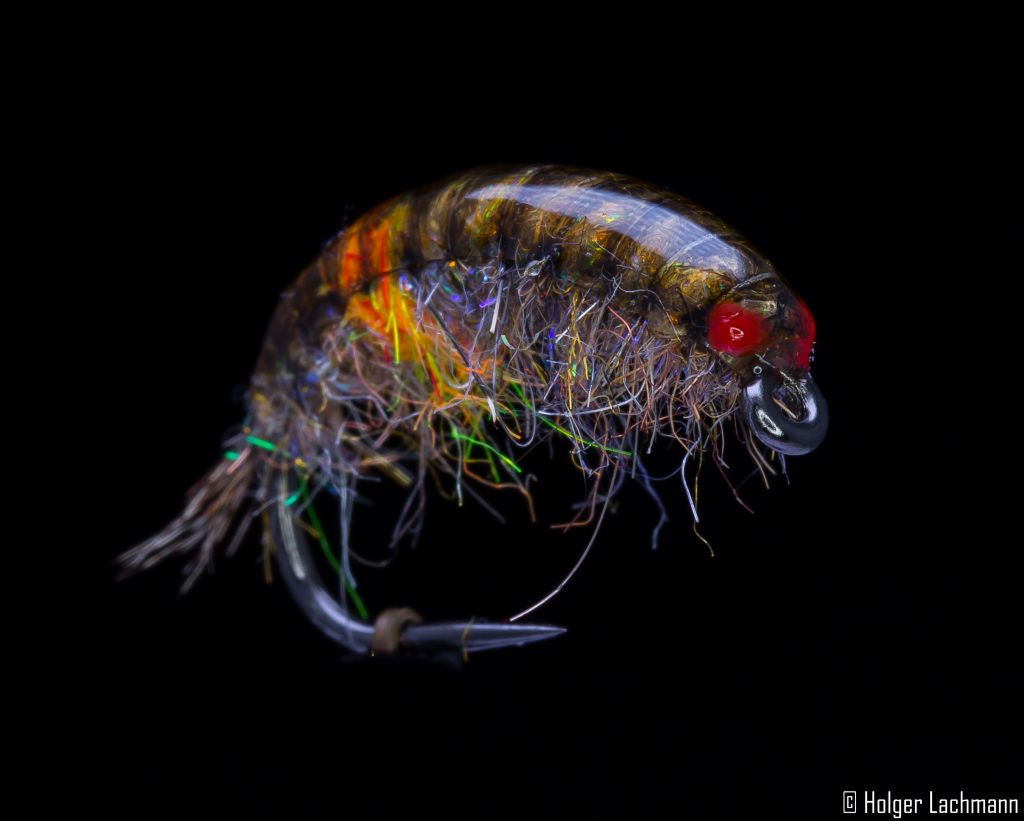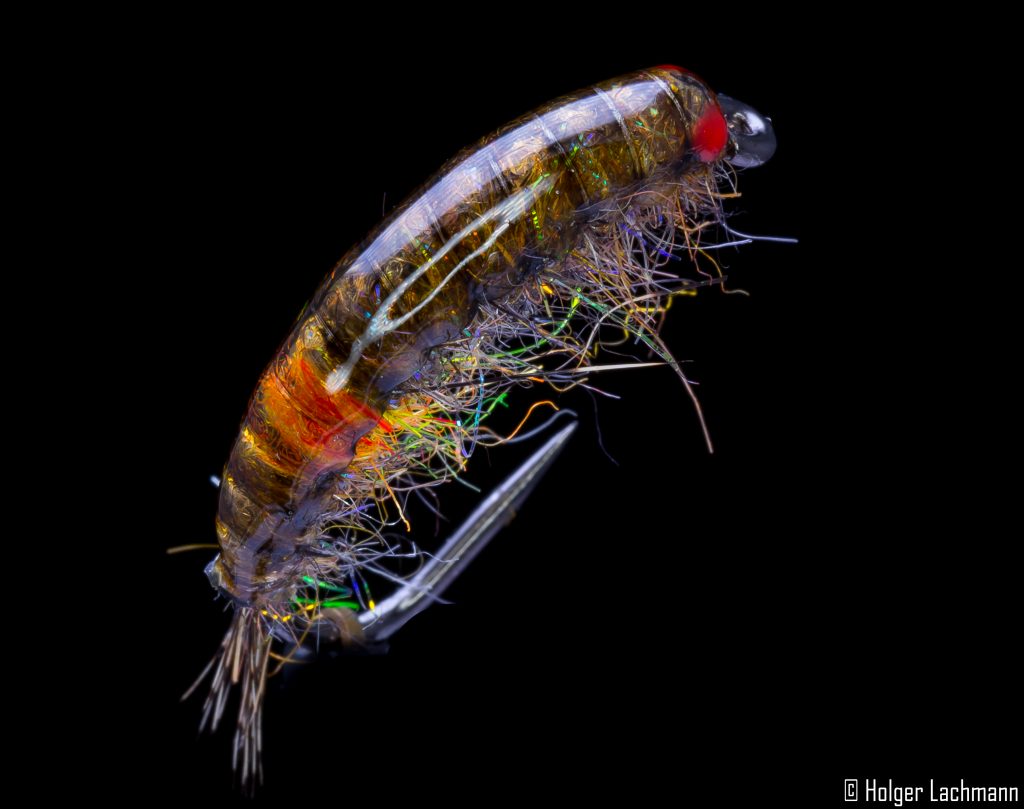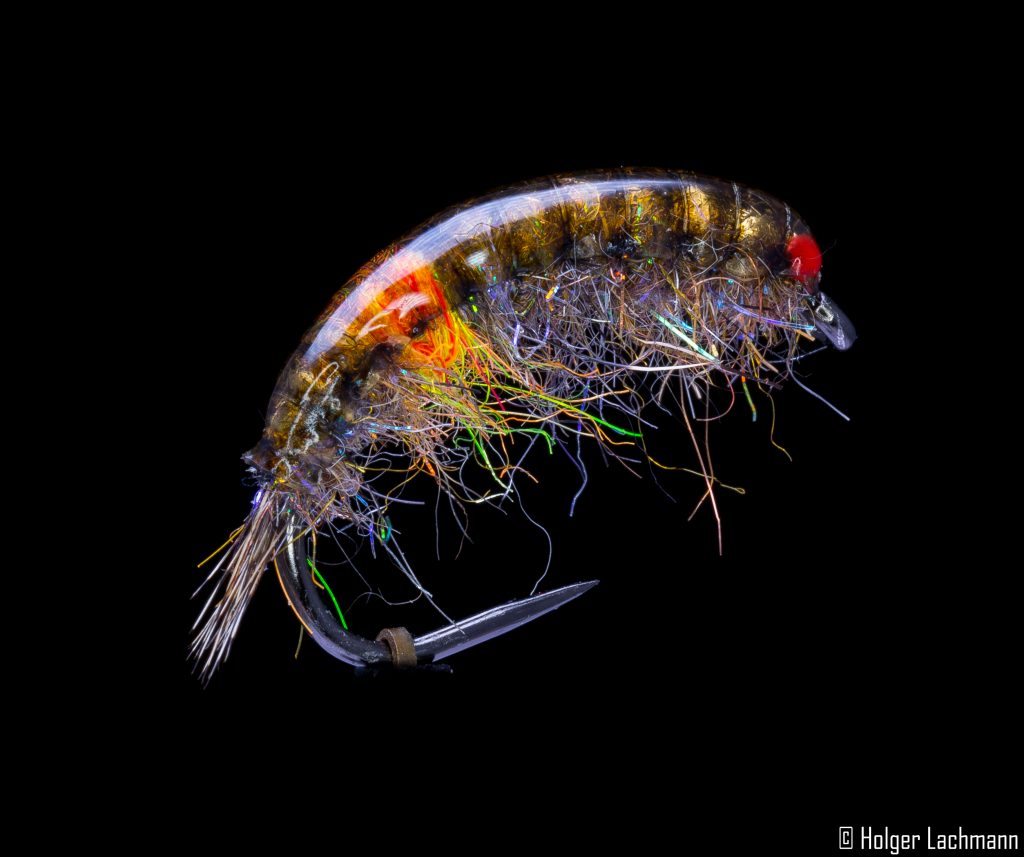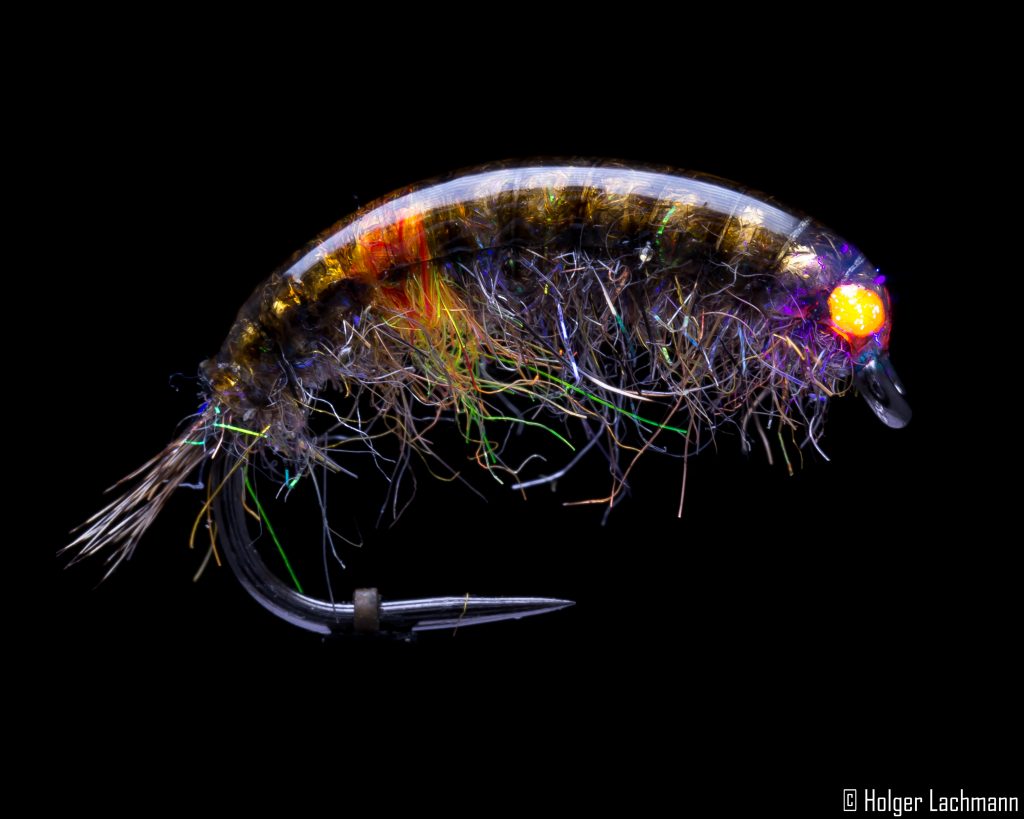




The Tangloppen imitates Gammarus and Idotea Baltica. These little crustaceans are a very important source of food for seatrouts, even if they are quite small. There are times, seatrout just feed on these small snacks. Also the very big fish, which normally chasing fish like herring and sandeels. So, you always should have some of these little nibbles in your fly box, when you fish in the Baltic Sea. ;-)
I tied these Tangloppen on a Gamakatsu F 314 hook # 4. This hook got a very big gap and a short shank. The body length is around 2cm.
For the tail and the antennas, I used Spanflex. The body is made out of a dubbing mix. The carapace is made with Pro Sportfisher Gammarus Shell # large, ribbed with mono and coated with Bug Bond uv resin. I didn’t use any weight, so you can fish the Tangloppen very slow, like the natural model.
This is a Gammarus pattern, weighted with thin lead foil tied on a shrimp hook # 12. Super simple fly. Lead on the hook, some antennas or legs made from Coq de Lon, mono for ribbing, Pro Sportfisher Gammarus Shell black on clear coated with Bug Bond UV Resin, SLF Saltwater Dub fluo shell pink and tying thread. That’s it! Tasty! ;-)
This is a really natural looking freshwater shrimp. Easy to tie and very durable. It’s tied with the new multi colored Gammarus Shrimp Back from Pro Sportfisher and Bug Bond.
You can get the Gammarus Shrimp Backs in different colors and sizes. Here, I used the brown color in small.
It was never easier to tie a super realistic pattern in such a short time. I believe, that it’ll catch fish from Finnland to Italy!
Materials:
Take the hook, push down the barb and put it in your vise. Cut a stripe of lead out of the lead foil and create a nice lead body.
Take a CDC feather and cut off a „V“ from the tip. Tie the feather in as shown.
Take a shrimp back from the sheet and tie it in at the end. Tie also in the mono for the ribbing.
I used for this Gammarus a mix made out of Squirrel Dubbing and Spectra Dubbing. A natural color with a little bit of flash. Dub a not to slim body.
Fold the Gammarus foil to the front and catch it with you tying thread. Then, rib the body with the mono. Catch the mono, cut it off and finish the tying with a whip finish.
Now, take your Bug Bond and coat the back of the shrimp and cure it with the Bug Bond torch.
Pick out some beards and fibres with your dubbing needle to imitate the legs.
The finished shrimp, ready to fish.
The shrimp when wet. I don’t think, that a fish can resist.
Tight lines
Holger